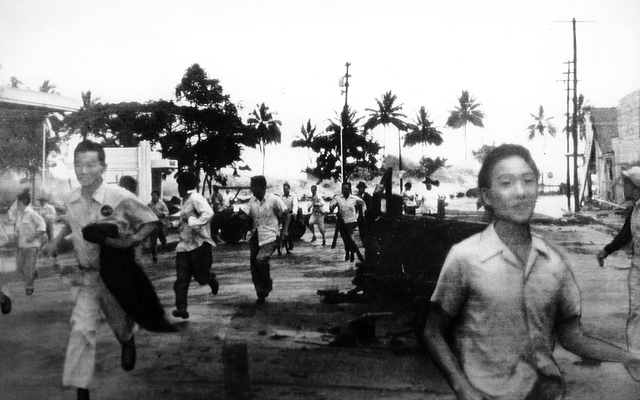One family was sitting down for breakfast in their two-story Bishop Street apartment. Nearby, a teen and his uncle were opening the family shop on Kamehameha Avenue. ADVERTISING One family was sitting down for breakfast in their two-story Bishop Street
One family was sitting down for breakfast in their two-story Bishop Street apartment. Nearby, a teen and his uncle were opening the family shop on Kamehameha Avenue.
Just before 7 a.m. on April Fools’ Day in 1946, no one had a clue rumblings thousands of miles away in Alaska would cause the massive tsunami that ripped through Hilo’s idyllic bayfront — killing 159 and destroying downtown buildings.
Friday marked 70 years since the disaster, which, along with the tsunami of May 23, 1960, had a significant long-term impact on the East Hawaii community. April 1 is also the start of Tsunami Awareness Month.
In commemoration of both occasions, Hilo’s Pacific Tsunami Museum, 130 Kamehameha Ave., is holding a free, all-day open house on April 16 that will give people a chance to meet with safety experts and check out the museum’s new science room.
A 1946 tsunami survivor also is attending the 10 a.m-to-4 p.m. event, officials said, and representatives from the Pacific Tsunami Warning Center, Hawaii County Civil Defense, the U.S. Geological Survey and other agencies will be on hand to answer questions about all things tsunami-related.
“It’s not a matter of if, but when,” said museum Executive Director Marlene Murray. “You never know when you may find yourself in danger. If you’re in Hawaii, you’re in an island state, and that means there’s potential. We feel it’s important for everyone to be prepared just in case.”
The Science Room is a grant-funded, five-section exhibit that delves into tsunami generation, warnings, propagation, run up and inundation. The room features an array of touchscreen tablets, a Loihi rock artifact, and a DART pressure recorder, which is a deep ocean pressure sensing device.
The room also has an interactive warning center simulation, designed as a more hands-on component in the room, museum officials said. Visitors can stomp on a map of the world to “generate” an earthquake and, after answering a series of questions — not unlike those the actual Pacific Tsunami Warning Center considers — determine if a tsunami is generated.
“We realize this (area) is a lot different than the rest of the museum,” Murray said. “It’s the science — it’s not the stories or the photos — it’s a lot of reading. We realize not everyone wants to read, so we try to make it more interactive in the visual, animations and simulations to help them learn.”
The museum, which opened in 1993, draws up to 20,000 visitors annually, Murray said, and yet only about 10 to 12 percent of them are residents. Officials hope to see more kamaaina attend.
“They’re the ones that should really be learning,” Murray said. “If you live in this state, you live and play near the ocean.”
Info: 935-0926.












